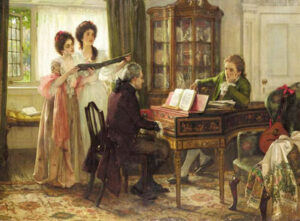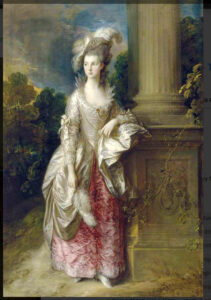
The inspiration for writing Madigan’s Leap in the first place was British and Irish folk music. I have always loved the lyrics and melodies of folk songs, and grew up listening to the music of, amongst others, Steeleye Span and Fairport Convention. The fascinating—and to me, unusual—lyrics of many of these songs taught me much about history.
In particular I found the horrific stories of press gangs in the 18th and early 19th century quite compelling. I felt driven to write a story about this onerous practice and the effect it must have had on young men, and indeed on entire families in that time and place.
Thus, thanks to music, I found myself writing about the last decade of the 19th century and the first few years of the 19th—in other words, the Regency era and the Napoleonic era.
Wikipedia says “The Regency era of British history is commonly applied to the years between c. 1795 and 1837, although the official regency for which it is named only spanned the years 1811 to 1820.”
“Madigan’s Leap” is set in an alternative version of Ireland during this era. It incorporates many aspects of the social, political and geographical elements of Ireland at that time, but I am a fantasy writer, after all, so this is a fantasy tale, and it bends many of the facts to suit the story.
I did my best, nonetheless, to clothe the characters in some of the (hopefully) historically accurate and exquisite costumes of that time. Most people agree, it was a time of exceptionally stylish attire for the military and for the wealthy. Isn’t that one of the many reasons we all love the novels of Jane Austen? 🙂 It is also said that “The uniforms of the Napoleonic Wars were some of the most elaborate and dashing in military history.”




